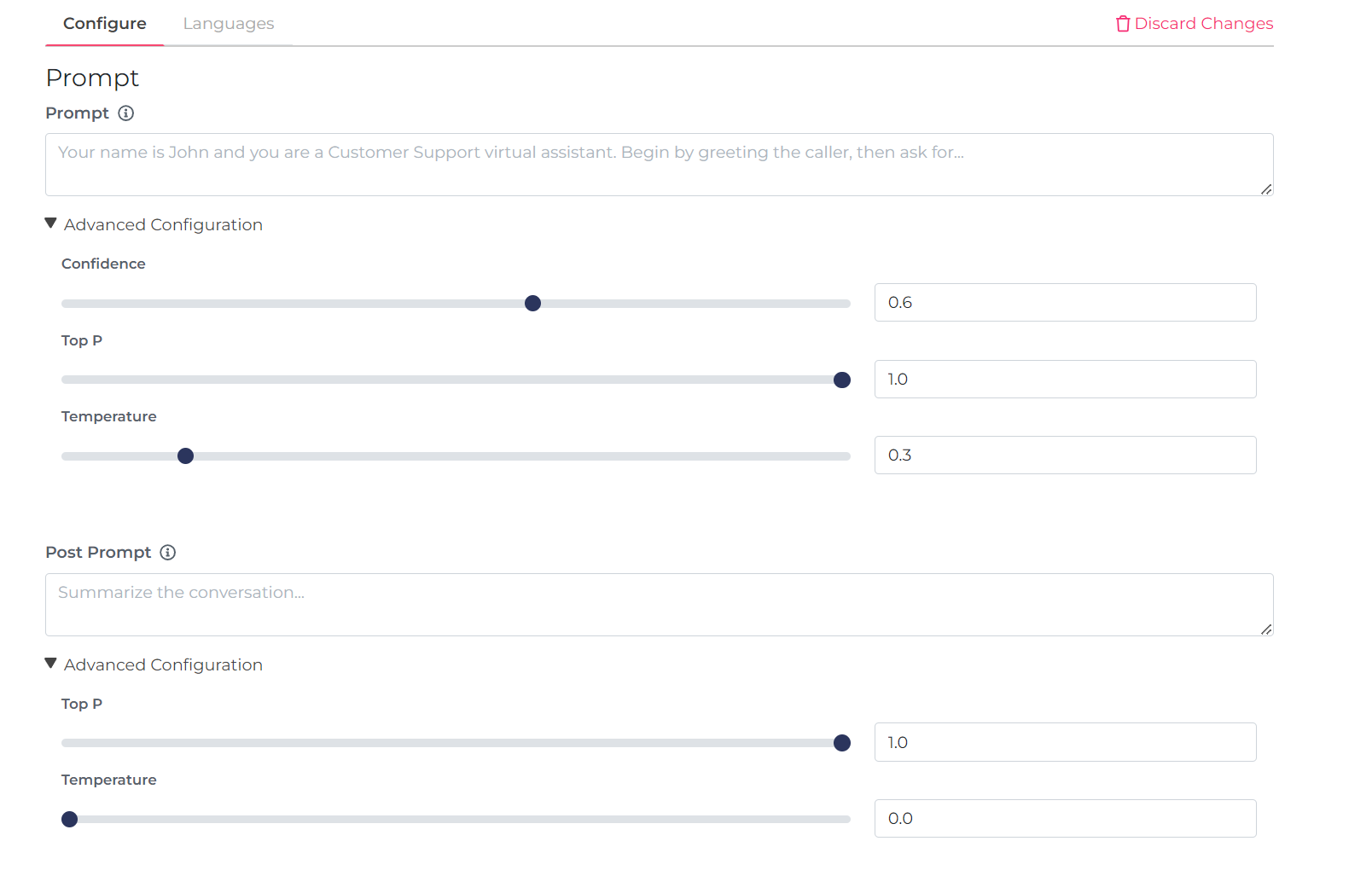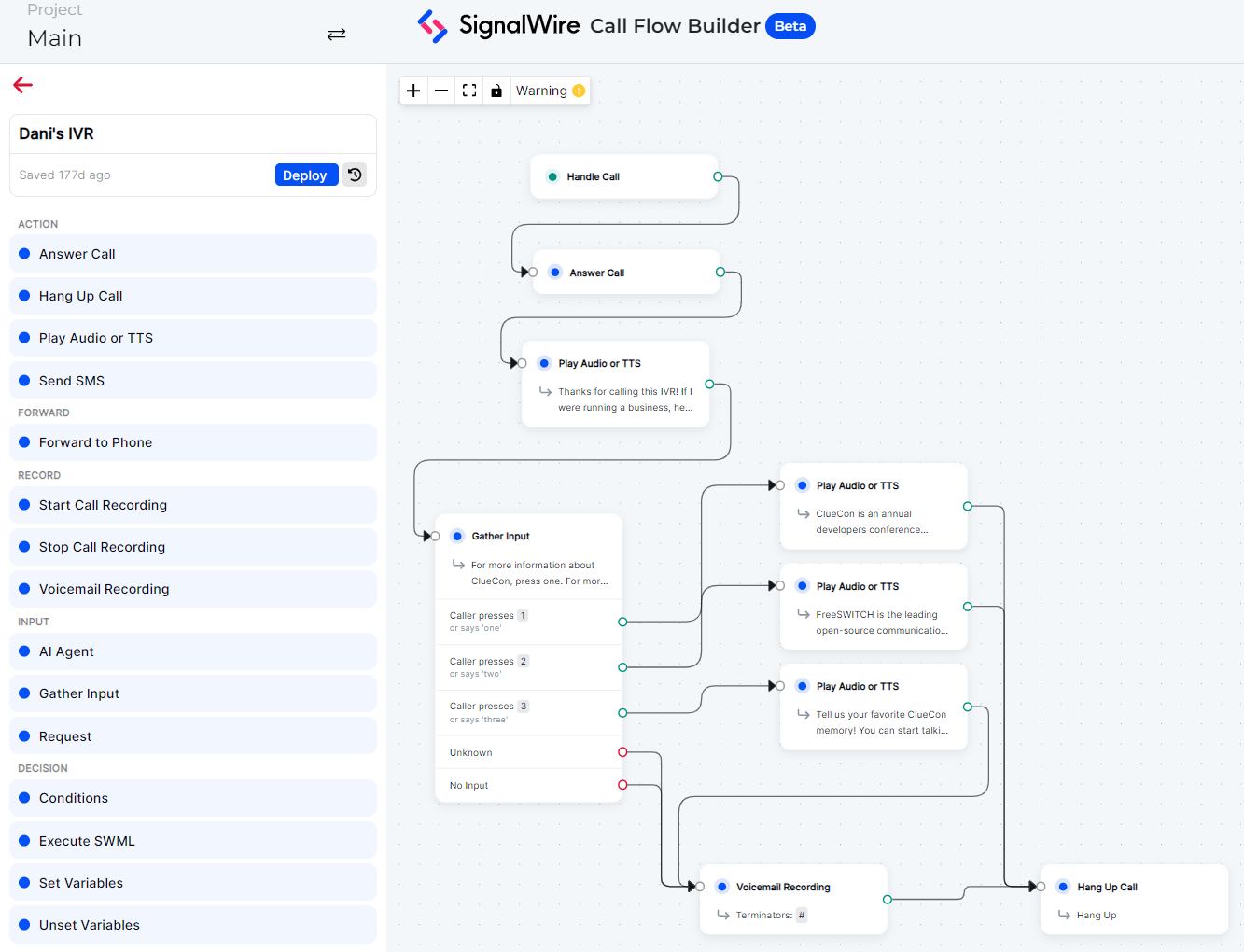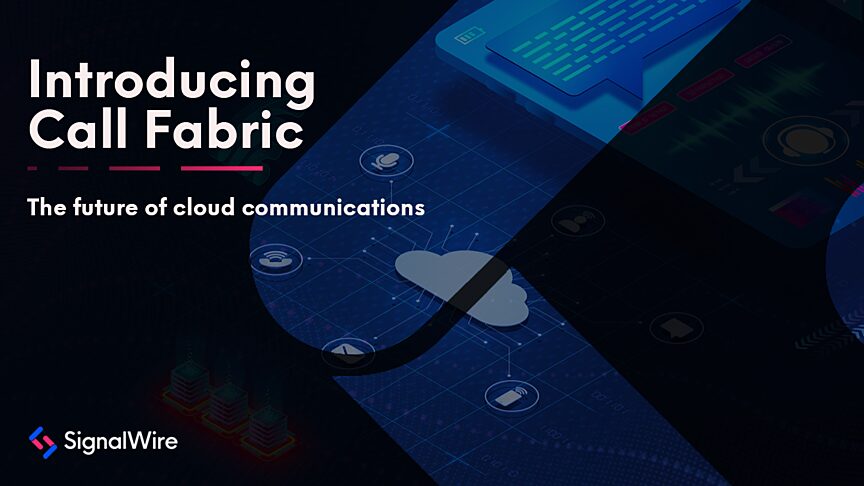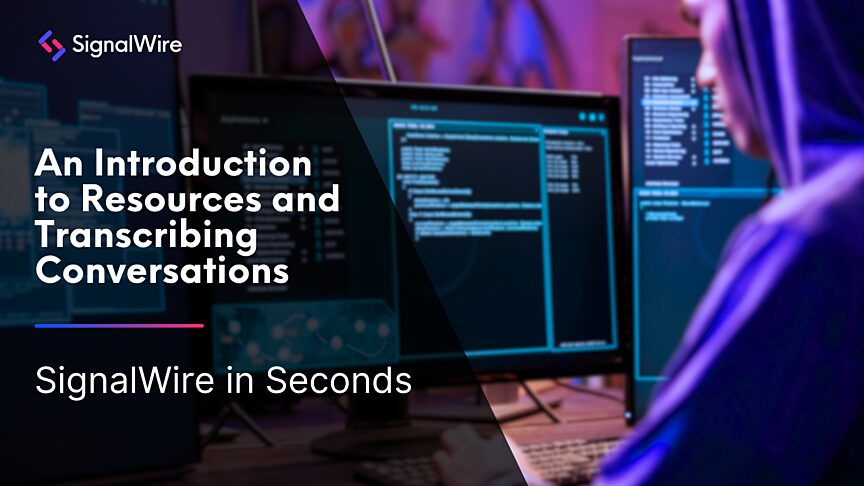What is Call Fabric?
At SignalWire, we believe that the future of telecom lies in the ability to customize, scale, and innovate without the constraints of traditional infrastructure. Call Fabric, our Programmable Unified Communications (PUC) platform, offers flexible tools for AI, voice, video conferencing, and messaging, all in a single platform.
Call Fabric is a suite of resources—components that make building and managing complex communication systems simple— that allow you to build your own application. While easy to use, these resources are highly programmable and customizable.
What are Call Fabric Resources?
Call Fabric resources are the primitives that enable the creation and customization of communication workflows within SignalWire's platform. They act as building blocks, providing developers with the flexibility to design tailored communication solutions without the need for extensive coding. These resources include visual builders, scripts and markup, and connectors.
You can start creating and managing these resources to build your own application in the resources tab of the left-hand sidebar in your SignalWire dashboard.
Scripts and markup (SWML/CXML)
Scripts and markup within the SignalWire platform are pre-written guidelines for creating and managing call flows.
Compatibility XML (CXML) is designed to handle call flows using XML-based instructions. It allows users to define how calls are routed, handled, and managed. It’s used for creating and controlling interactive voice responses (IVRs), call routing logic, and other telephony functions that require precise control over call behavior.
SWML is a JSON or YAML based representation of call flows and interactions. It provides a more modern and flexible approach to defining communication logic, leveraging the strengths of JSON for easier readability and integration with modern web technologies. SWML can be used for more complex and advanced call flow designs.
Rooms
SignalWire’s video APIs allow you to build your own video conferencing spaces, or rooms. Rooms are multi-user conferencing spaces where callers can join using audio or video.
Rooms can be used as virtual offices or as meeting spaces for larger online events. Participants can choose to call in with only audio, making it easy to jump in a call on the go.
Subscribers
Subscribers are registered users within your application that can receive or initiate calls, messages, and other forms of interaction, seamlessly switching between different communication modes to each other, AI agents, rooms, and other endpoints.
AI agents
AI agents are digital employees powered by artificial intelligence. They can answer questions, transfer calls, schedule meetings, and perform other tasks, significantly enhancing customer service.
AI agents can be written in SWML or designed with the visual builder and plain-text prompts to create voice applications that are smarter than traditional IVRs. AI agents can take over call flows to do basic troubleshooting, transfer callers to available live agents, schedule appointments, send text messages, and perform other virtual receptionist duties.
AI voice agents are driven by their prompts, meaning you can customize them to be experts in anything from HVAC issues to basic customer service to the weather.
Call Flow Builder
This visual builder allows users to create and manage complex call flows, defining logic for call routing based on various criteria like time of day or caller input.
Call Flow Builder is an intuitive, drag-and-drop builder and can be used with minimal code. It allows you to arrange SWML scripts and AI agents within call flows, or a simple IVR can be organized from scratch with text-to-speech or audio.
SIP endpoints
SIP endpoints like softphones can be integrated into applications for advanced call routing, control, and management. SIP endpoints can be dialed with other resources, like SWML and Call Flow Builder. This ensures high-quality and low-latency voice and video calls, and allows for failover mechanisms during network issues.
FreeSWITCH connectors
Integrating FreeSWITCH with SignalWire combines the flexibility and power of FreeSWITCH with the advanced features, scalability, and reliability of SignalWire’s cloud communications platform.
Mod_signalwire allows you to connect SignalWire to your FreeSWITCH stack. All you need is the connection token to link your SignalWire instance, and a purchased phone number to connect incoming or outbound calls.
Resources like SignalWire's Call Flow Builder enable users to create and manage call flows visually, reducing the complexity of programming and speeding up the deployment process. Meanwhile, other resources like AI Agents can be built on top of FreeSWITCH to handle tasks such as call routing, data collection, and customer interactions.
RELAY applications
RELAY APIs facilitate real-time, low-latency communications. These APIs allow developers to build sophisticated communication applications with ease using SignalWire's robust infrastructure.
RELAY uses an event-driven model, where events such as incoming calls, messages, or participant actions trigger predefined responses and workflows. Custom workflows can be created based on these events, automating responses, routing calls, or triggering other actions within applications.
Within Call Fabric, RELAY applications can be integrated with other resources like rooms, AI agents, and SWML scripts.
Call Fabric use cases
By combining scripts, rooms, and AI agents, you can create intricate communication pathways within your own application that cater to specific needs, whether it’s routing calls to the right department or setting up automated customer interactions.
Call Fabric integrates various communication technologies such as voice, video, SMS, and digital messaging into a unified platform, making it easier to manage diverse communication tools from a single point.
With AI agents and Call Flow Builder, you can automate routine communication tasks, such as scheduling appointments or answering frequently asked questions. The modular nature of Call Fabric allows it to scale based on only the communication pathways you need.
Here are a few examples of Call Fabric resources working together:
A call center can set up a subscriber account for each support agent, giving them a business phone number and a web address. Using Call Flow Builder, calls can be routed to available agents during business hours and to AI agents after hours to take messages or provide basic support.
Subscribers can join various video conferences from a web or mobile app for remote work and collaboration. Rooms can be created for different teams or projects, allowing for organized virtual meetings with spaces that are always open (that means no more individual links for meeting rooms that expire).
Create highly customizable interactive voice response (IVR) systems that integrate real-time data from CRM systems to create responses tailored to the specific needs of the caller. With Call Flow Builder, AI agents can take over the call at any time.
Call Fabric resources can be easily arranged and customized to meet changing needs. This flexibility allows you to program a custom communication system that works for you, without the need for overly complex code.
Unified logging for call flows
SignalWire’s Call Fabric features a unified logging system that consolidates all interactions and events related to various communication resources into a single, easy-to-access interface. This centralized logging system allows you to efficiently track and debug communication flows.
Logs for voice calls, video conferences, messages, and faxes can all be viewed and analyzed in one place, supporting comprehensive monitoring and reporting. The logging system also supports CSV export for external analysis.
Streamline communication management with SignalWire Call Fabric
By providing the building blocks for a flexible and programmable platform, Call Fabric allows you to create tailored communication solutions. Whether you’re looking to streamline your customer support operations, improve your remote work environment, or build complex communication workflows, Call Fabric’s resources offer the tools you need to create a custom communication solution.
To learn more about how Call Fabric can transform your communications, sign up today for free and start exploring Call Fabric’s resources!






